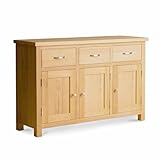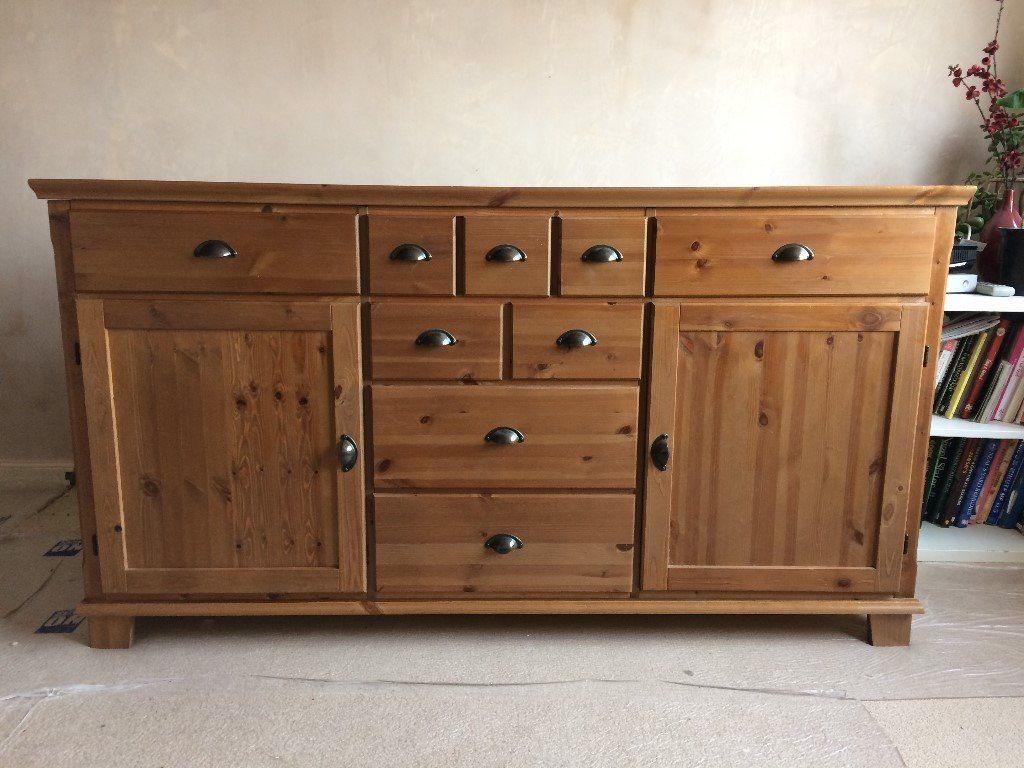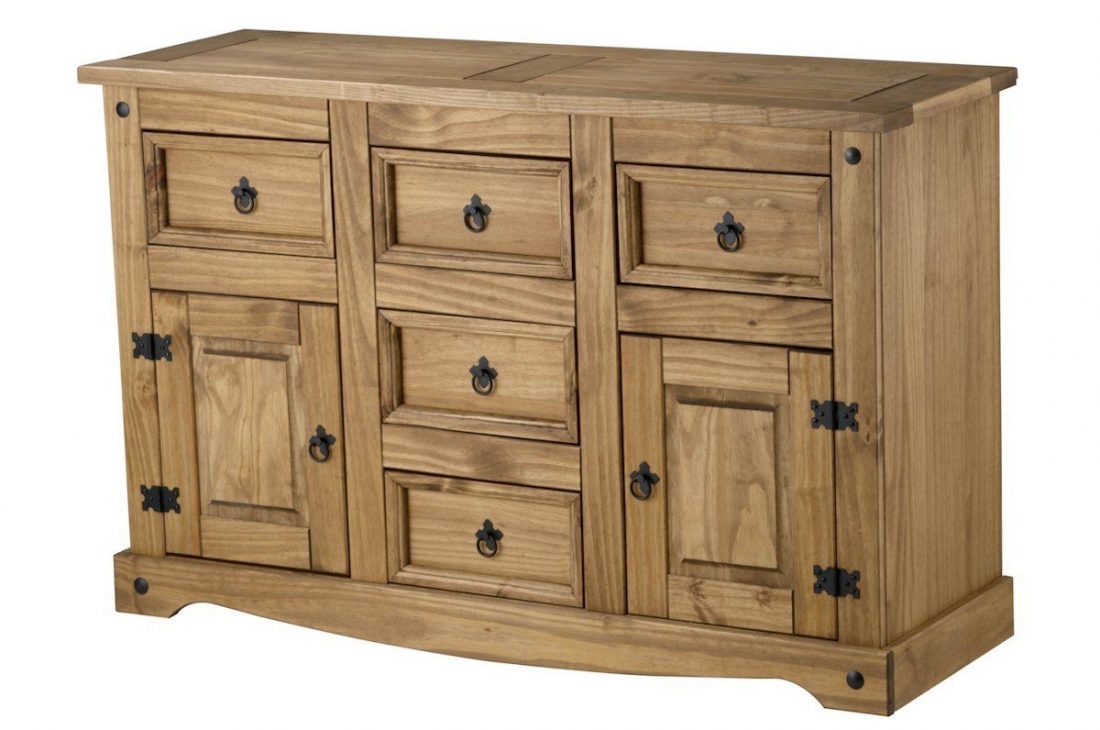Choosing the right dining furniture can transform your mealtimes into memorable experiences. This pillar post…
Oak sideboards are a timeless addition to any home, offering both practicality and aesthetic appeal. Whether you’re looking to enhance your dining room, living space, or hallway, an oak sideboard provides ample storage while complementing various interior styles. In this comprehensive guide, we’ll cover everything you need to know about oak sideboards, including types, benefits, styling tips, and where to buy them in the UK.
Why Choose an Oak Sideboard?
1. Durability and Longevity
Oak is one of the strongest and most durable hardwoods, making it an ideal material for furniture that lasts for generations. Unlike cheaper alternatives, solid oak sideboards resist wear and tear, maintaining their beauty over time.
2. Timeless Aesthetic Appeal
An oak sideboard unit boasts a natural wood grain that enhances its visual appeal. Whether you prefer a rustic oak sideboard with a distressed finish or a modern oak sideboard with clean lines, there’s a look to suit every home.
3. Versatile Storage Solutions
These pieces offer a combination of drawers, cabinets, and shelving, providing ample space for dining essentials, books, or decorative pieces. A large oak sideboard can serve as a statement piece, while a narrow oak sideboard fits well in compact spaces.
Types of Oak Sideboards
1. Traditional Oak Sideboards
These feature ornate details, rich wood tones, and classic craftsmanship, making them ideal for period homes and traditional interiors.
2. Modern Oak Sideboards
With sleek designs, minimalist hardware, and light oak finishes, contemporary options seamlessly blend with modern decor.
3. Rustic Oak Sideboards
Designed with a natural, weathered look, these often include distressed finishes, exposed knots, and handcrafted details, perfect for country-style homes.
4. Industrial Oak Sideboards
Featuring a mix of wood and metal elements, industrial-style oak storage sideboards work well in loft apartments and urban-inspired interiors.
5. Small and Compact Oak Sideboards
Perfect for apartments and small homes, these compact oak sideboards provide storage without taking up too much space.
How to Choose the Perfect Oak Sideboard
1. Consider Your Space
Before purchasing, measure your space to ensure the furniture fits comfortably. If you have a narrow hallway, a slim oak sideboard will be a better choice than a bulky model.
2. Storage Requirements
Do you need more drawers, shelves, or cabinet space? If you’re using the unit in a dining area, opt for a dining oak sideboard with built-in wine racks or cutlery drawers.
3. Matching Your Decor
Choose a finish that complements your existing furniture. A light oak sideboard works well in Scandinavian interiors, while a dark oak sideboard suits traditional spaces.
4. Budget Considerations
Prices vary depending on whether they’re made from solid oak wood or oak veneer. Solid wood is more durable but comes at a higher price.
Best Places to Buy Oak Sideboards in the UK
Several reputable furniture retailers offer high-quality oak sideboards. If you’re looking for reliable craftsmanship, consider brands known for their solid wood furniture. For an overview of sustainable oak sourcing, check out The Woodland Trust, which promotes responsible forestry in the UK.
Styling Tips for Oak Sideboards
1. Decorate with Accessories
Enhance your oak sideboard storage unit with decorative vases, framed photos, or table lamps to create a cohesive look.
2. Use a Mirror Above Your Oak Sideboard
Placing a mirror above an oak sideboard cabinet adds depth to the room and enhances natural light.
3. Create a Functional Display
If your oak dining sideboard is in the dining area, use it to store and display glassware, plates, and napkins for easy access.
4. Mix Materials
Pairing oak wood sideboards with metal, glass, or ceramics adds contrast and creates a more dynamic interior style.
FAQs About Oak Sideboards
1. What is the difference between solid oak and oak veneer?
Solid wood is made entirely from oak, making it more durable and long-lasting. Veneer options have a thin layer of oak over a cheaper wood core, offering a similar look at a lower price.
2. How do I maintain an oak sideboard?
Regular dusting and occasional polishing with natural wood oil will keep your solid oak sideboard in top condition. Avoid placing it in direct sunlight to prevent discoloration.
3. Can I paint or stain my oak sideboard?
Yes! If you want a different look, you can sand and repaint or stain your wooden oak sideboard. However, solid wood is best kept in its natural state to showcase its beautiful grain.
4. What’s the best finish for an oak sideboard?
The best finish depends on your preference. Oiled oak sideboards enhance the natural grain, while lacquered oak sideboards provide extra protection against spills and stains.
5. Are oak sideboards sustainable?
Yes, if sourced from responsible suppliers. Look for certifications such as FSC (Forest Stewardship Council) to ensure your oak wood sideboard comes from sustainable forests.
Conclusion
An oak sideboard is a perfect blend of style, functionality, and durability, making it a valuable investment for any home. Whether you prefer a modern oak sideboard, rustic oak sideboard, or traditional oak sideboard, choosing the right one will elevate your interior space while offering practical storage solutions. Explore trusted UK furniture retailers and opt for sustainably sourced oak to enjoy a timeless piece that will last for years.
While oak sideboards offer a timeless durability and elegant finish, pine sideboards present a charming alternative with a more rustic and inviting appeal. Their lighter texture and natural grain pattern make them versatile for various interior styles, effortlessly transitioning between casual and formal settings. Additionally, for those seeking a modern twist on classic design, the corona sideboard stands out as a striking option that combines contemporary aesthetics with the enduring character of traditional woodwork.















